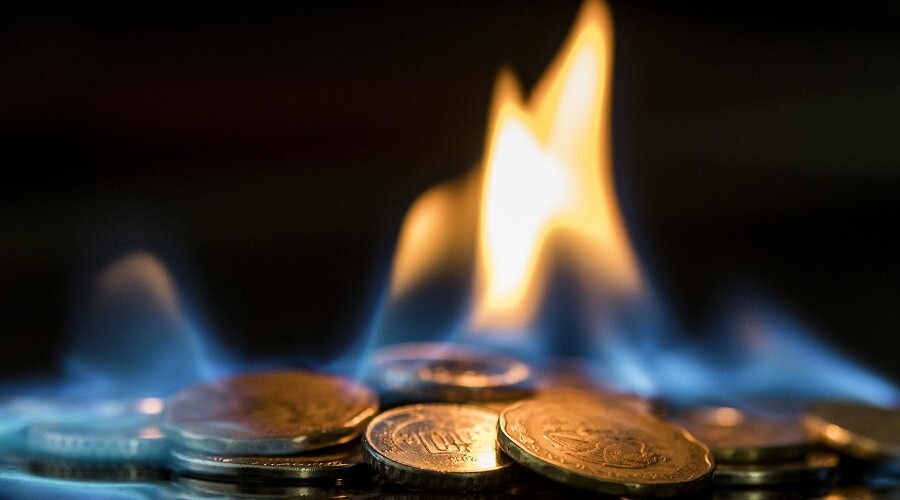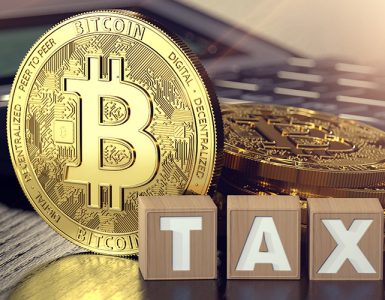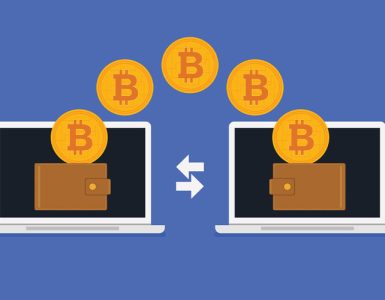Cryptocurrencies have seen significant growth and innovation in recent years. One particular practice that has gained traction among various blockchain projects is coin burning. Coin burning refers to the deliberate and permanent removal of a portion of a cryptocurrency’s supply from circulation. This article explores some of the famous examples of successful coin burning initiatives and their impact on the token ecosystems.
Introduction
The rapid evolution of cryptocurrencies has brought forth numerous strategies to enhance the functionality, value, and sustainability of digital assets. Coin burning is one such strategy that has gained attention for its ability to create scarcity and potentially increase the value of a cryptocurrency. By permanently removing coins from circulation, coin burning can have a positive effect on a token’s supply and demand dynamics.
What is Coin Burning?
Coin burning is a process commonly used in the cryptocurrency industry, where a certain number of cryptocurrency tokens are deliberately and permanently removed from circulation. This removal is typically achieved by sending the tokens to an unspendable address or a “black hole” from which they cannot be accessed or retrieved.
The purpose of coin burning varies depending on the specific cryptocurrency project and its goals. Some common reasons for implementing coin burning include controlling inflation, increasing scarcity, enhancing token value, and demonstrating a commitment to tokenomics.
By reducing the total supply of a cryptocurrency through coin burning, the remaining tokens become rarer and potentially more valuable. The decrease in supply can create a sense of scarcity, which may attract investors seeking assets with limited availability. Additionally, reducing the supply can help maintain a balance between the demand and supply of the cryptocurrency, potentially contributing to price stability.
Benefits of Coin Burning

- Scarcity Creation: Coin burning helps create scarcity by permanently removing tokens from circulation. As the supply decreases, the remaining tokens become rarer, potentially increasing their value.
- Supply and Demand Balance: By reducing the total supply of a cryptocurrency, coin burning can help maintain a healthy balance between supply and demand. This balance can prevent excessive inflation and promote a more stable market.
- Value Enhancement: Coin burning has the potential to increase the value of a cryptocurrency. As the supply decreases and the demand remains constant or increases, the scarcity of the remaining tokens can drive up their price.
- Investor Attraction: Coin burning initiatives can attract investors who value assets with limited availability. The perception of scarcity can create a sense of urgency and FOMO (fear of missing out), encouraging more people to invest in the cryptocurrency.
- Tokenomics Reinforcement: Coin burning demonstrates a commitment to tokenomics and long-term sustainability. It showcases the project’s dedication to maintaining a controlled and balanced ecosystem for the benefit of token holders.
- Credibility and Reputation: Implementing coin burning initiatives can enhance the credibility and reputation of a cryptocurrency project. It signals a proactive approach to managing token supply and shows that the project is focused on the long-term success of its ecosystem.
Famous Examples of Coin Burning Initiatives
Numerous cryptocurrencies have successfully implemented coin burning initiatives, each with its own unique approach and objectives. Let’s explore some famous examples:
Bitcoin’s Proof of Burn
Although not implemented directly as coin burning, Bitcoin’s proof of burn mechanism allows users to destroy coins from one cryptocurrency to generate new ones on the Bitcoin blockchain. This process ensures that users demonstrate a “burn” of value from an existing blockchain, making it a notable example of indirectly achieving the benefits of coin burning.
Binance Coin (BNB)
The native cryptocurrency of the Binance exchange, periodically conducts burn events. Binance uses 20% of its quarterly profits to buy back and burn BNB tokens, reducing the overall supply. This practice aims to enhance the scarcity and value of BNB, benefiting its holders and reinforcing the exchange’s commitment to token holders’ interests.
Ripple’s XRP
Ripple, the blockchain-based payment protocol, periodically conducts XRP token burns. Ripple’s escrow system releases a specified amount of XRP each month, with any unused tokens being returned to escrow. Ripple then burns a portion of the returned tokens, reducing the circulating supply and potentially increasing the value of the remaining XRP tokens.
Ethereum’s EIP-1559
Ethereum’s highly anticipated EIP-1559 upgrade introduces a fee-burning mechanism into the Ethereum network. With each transaction, a portion of the gas fees will be burned, effectively reducing the supply of Ethereum over time. This upgrade aims to mitigate the scalability and gas fee concerns while potentially increasing the value of Ethereum by making it a deflationary asset.
Tron’s TRX
Tron, a decentralized blockchain platform, has conducted multiple coin burn events. Tron’s coin burning strategy involves allocating a certain portion of transaction fees for burning TRX tokens. By reducing the supply, Tron aims to enhance the scarcity and value of its native cryptocurrency.
Stellar Lumens (XLM)
Stellar Lumens (XLM), the native cryptocurrency of the Stellar blockchain, has incorporated coin burning into its network protocol. Stellar’s coin burning mechanism imposes a small transaction fee on each operation, which is then burned, reducing the total supply. This approach helps maintain the balance between supply and demand, potentially increasing the value of XLM.
Cardano’s ADA
Cardano, a blockchain platform focused on security and sustainability, plans to implement a treasury system that includes coin burning as a key component. The treasury system will allocate a portion of transaction fees for burning ADA tokens, aiming to control inflation and maintain a healthy balance between supply and demand.
VeChain’s VET
VeChain, a blockchain platform for supply chain management. It has utilized coin burning to enhance the value and scarcity of VeChain’s native token, VET. VeChain burns VET tokens as part of its economic model, aligning with its goal of ensuring a sustainable ecosystem and creating long-term value for its stakeholders.
Impact of Coin Burning on Tokenomics
- Supply Reduction: Coin burning permanently removes tokens from circulation, reducing the total supply available in the market. This reduction in supply can create scarcity and potentially increase the value of the remaining tokens.
- Scarcity and Demand: By decreasing the available supply, coin burning can increase the scarcity of a cryptocurrency. As scarcity increases, the demand for the remaining tokens may rise, potentially leading to an increase in their value. This demand-supply dynamics can have a positive impact on tokenomics.
- Price Effects: The reduction in supply and potential increase in demand resulting from coin burning can contribute to price appreciation. As the value of the remaining tokens increases, it can positively impact the overall market price of the cryptocurrency.
- Market Confidence: Coin burning initiatives can boost market confidence in a cryptocurrency project. By demonstrating a commitment to managing the token supply and ensuring long-term sustainability, the project can instill trust and attract more investors, thereby strengthening the overall tokenomics.
- Token Holder Benefits: Coin burning can benefit existing token holders by potentially increasing the value of their holdings. As the supply decreases and scarcity is created, token holders may experience appreciation in the value of their tokens, enhancing their overall investment returns.
- Inflation Control: Coin burning can be used as a mechanism to control inflation within a cryptocurrency ecosystem. By reducing the circulating supply, the project can manage the rate at which new tokens enter the market. Thus maintaining a balance between supply and demand and mitigating the risk of excessive inflation.
Challenges and Risks
While coin burning initiatives have shown promise, they are not without challenges and risks. Determining the optimal amount of tokens to burn and the frequency of burn events requires careful consideration to avoid unintended consequences. Furthermore, regulatory concerns and market volatility can impact the success and feasibility of coin burning initiatives. It is essential for projects to evaluate these challenges and risks before implementing a coin burning strategy.
Conclusion
Coin burning has emerged as a popular strategy among blockchain projects to enhance the value and sustainability of their cryptocurrencies. Through deliberate and permanent removal of tokens from circulation, coin burning can create scarcity, combat inflation, and reinforce the commitment to tokenomics. By exploring famous examples of successful coin burning initiatives, it becomes evident that this practice has the potential to positively impact a token’s ecosystem and attract stakeholders who value controlled and sustainable supply dynamics.
FAQs
What is the purpose of coin burning?
Coin burning serves multiple purposes, including creating scarcity, combating inflation, and increasing the value of a cryptocurrency.
How does coin burning affect the value of a cryptocurrency?
By reducing the supply, coin burning can potentially increase the scarcity and demand for a cryptocurrency, leading to a potential increase in its value.
Can anyone initiate a coin burning process?
The ability to initiate a coin burning process depends on the cryptocurrency project’s governance and consensus mechanisms. Some projects may allow community participation, while others require specific authorization.
Is coin burning a sustainable solution for cryptocurrencies?
Coin burning can contribute to a cryptocurrency’s sustainability by controlling inflation and showcasing a commitment to tokenomics. However, its long-term sustainability depends on various factors, including the project’s underlying technology, adoption, and market conditions.
How can I participate in a coin burning initiative?
To participate in a coin burning initiative, it is essential to follow the guidelines and instructions provided by the cryptocurrency project conducting the burn. This may involve holding the tokens in a specific wallet or participating in designated events.





